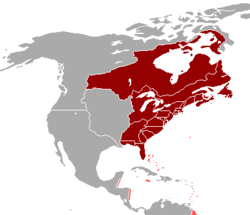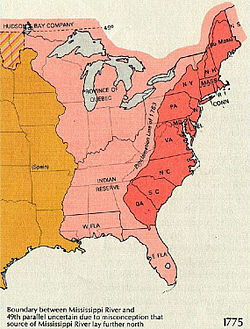British North America
British North America was the British part of the continent of North America that is now part of the United States and Canada. The term was used mostly before the American Revolution.



In 1759, after winning the Battle of the Plains of Abraham, the British took control of the colony of New France from the French.
The term "British North America" was used after the 1783 Treaty of Paris, which ended the American Revolutionary War and made the British recognize the Thirteen Colonies as independent states. The colonies had formed the United States in 1776.
The terms "British America" and "British North America" continued to be used for Britain's remaining territories in North America. The term "British North America" came to be used more consistently for the provinces that would eventually form the Dominion of Canada.
After the American Revolution, some people still used the term to refer to what is now in Canada. In fact, the Canadian Constitution was at first called the "British North America Act."
Also, not all of what is in the United States were always in the country. For example, areas near the Mississippi River were not part of the original United States. They kept their old allegiances to Britain or France. Also, what is now the Western United States was largely Spanish-speaking before the United States took the region during the Mexican-American War since the region was part of Mexico and earlier Spain.
Sources
change- Cooke, Jacob E. 1993. Encyclopedia of the North American Colonies. (3 vols)
- Foster, Stephen, ed. 2014. British North America in the Seventeenth and Eighteenth Centuries (Oxford History of the British Empire Companion).
- Garner, John. 1969. The franchise and politics in British North America, 1755–1867 (U of Toronto Press)
- Gipson, Lawrence Henry. 1936–70. The British Empire before the American Revolution (15 vols)
- Morton W.L. 1969. The Kingdom of Canada: a general history from earliest times.